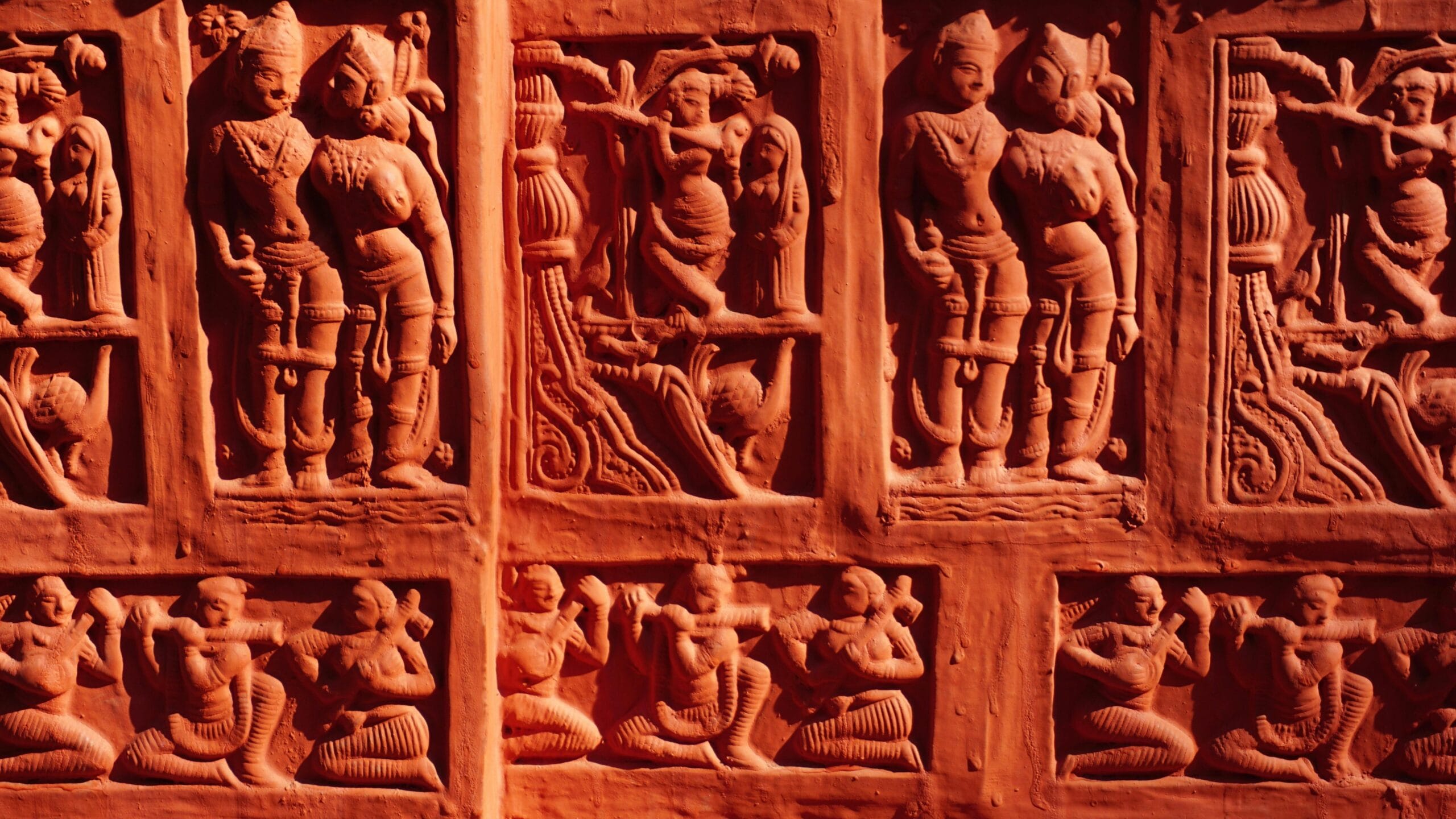The Elusive Saraswati River: Myth, History, and Archaeological Evidence
The Saraswati River holds a revered place in Indian culture and is often depicted as a divine entity with mentions in ancient texts like the Vedas. This has led to widespread misconceptions about the river’s existence, age, and connection to the Vedic civilization. Some propagate the idea that the Vedas are ancient because the Saraswati River, mentioned within them, supposedly dried up 3,500 to 4,000 years ago, implying the Vedas predate this event.
This article delves into these persistent myths and explores the factual understanding of the Saraswati River through historical records and archaeological findings.It is crucial to approach this topic with an open mind, as complex historical narratives surrounding the Saraswati River have ensnared even learned individuals.
This exploration aims to bring to light the lesser-known aspects of this historical enigma, presenting a comprehensive analysis of the available evidence. The intention is not to attack any personal beliefs but to present a rational perspective based on research and factual data.
Table of Contents:
- The Geographic Context of the Ghaggar-Hakra River
- Vedic References and the Saraswati Conundrum
- Archaeological and Geological Perspectives
- Challenging the Saraswati-Ghaggar-Hakra Equation
- Scientific and Archaeological Re-evaluation
- Debunking the 'Mighty River' Narrative
- Archaeological Excavations at Adi Badri
- Conclusion: Unraveling the Truth
- What Can You Do?
The Geographic Context of the Ghaggar-Hakra River
Mapping the Potential Saraswati
Visual representations, such as maps, often depict the Ghaggar-Hakra river system as the geographical location of the mythical Saraswati River. This system, a remnant of an ancient river, flows through parts of Pakistan and India.
The black line representing the Ghaggar-Hakra is frequently identified as the Saraswati in popular discourse. This map also shows the proximity of other significant sites like Harappa, Rakhigarhi, Kalibangan, and the Indus River, along with the Yamuna River. This geographical context is crucial for understanding the claims made about the Saraswati’s course and its relationship with the Indus Valley Civilization.
The Ghaggar-Hakra: A Seasonal River
The Ghaggar-Hakra is largely recognized today as a seasonal river, primarily dependent on rainwater. Its origins are in the Shivalik foothills, and it flows through Punjab, Haryana, and Rajasthan before reaching the Cholistan and Sindh regions of Pakistan. The identification of this river as the Saraswati is central to many arguments about the antiquity of Vedic texts.
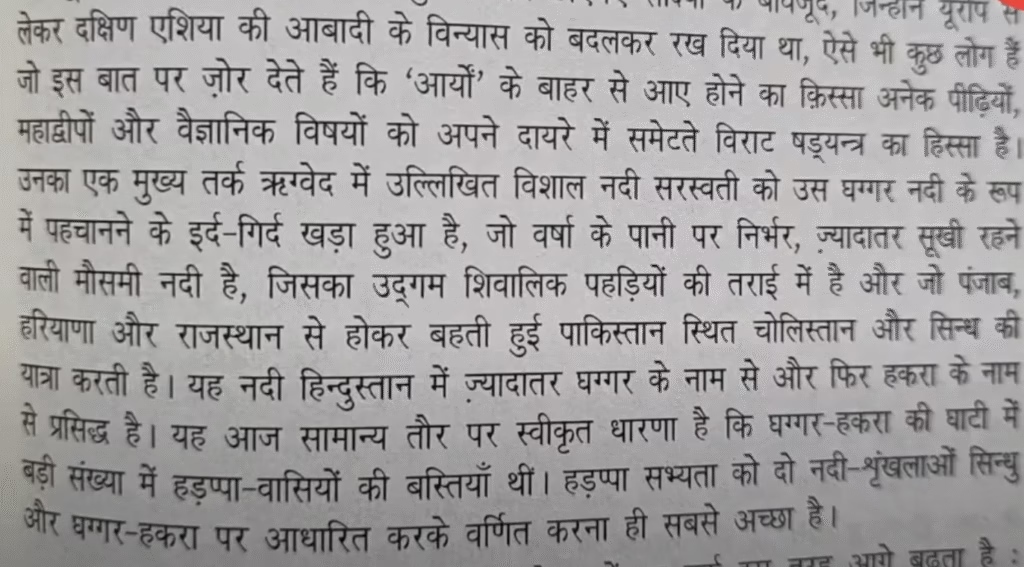
However, the seasonal nature of the Ghaggar-Hakra raises questions about its capacity to sustain a civilization or be consistently described as a mighty river in ancient literature. How could a seasonal stream support a civilization comparable to the Indus Valley? This raises serious doubts about its identification with the mighty river described in Vedic texts.
Vedic References and the Saraswati Conundrum
The Saraswati in the Rigveda
The Rigveda, one of the oldest Vedic texts, does mention a river named Saraswati. However, the exact interpretation and context of these mentions are subjects of ongoing debate. Proponents of the ancient Vedic civilization often cite these references to establish the antiquity of the Vedas and the existence of the river. The key question remains whether the Saraswati mentioned in the Rigveda is indeed the same as the Ghaggar-Hakra or if it refers to a different, possibly lost, river, or even a metaphorical entity.
Continuity of Names and Civilizations
A significant argument against the identification of the Saraswati with the Ghaggar-Hakra is the apparent lack of continuity in names and cultural practices. If the Vedic civilization was as ancient and continuous as claimed, and the Saraswati River was a prominent feature, why would its name or the names of other associated rivers like the Sutlej and Beas (mentioned with different names in Vedic texts) have been lost or altered so drastically?
If the oral tradition was so robust, why would the names of other major rivers like the Sutlej and Beas be so different in Vedic texts compared to their modern forms, while only Saraswati’s name remained perfectly preserved?
The argument is that if the tradition of oral transmission of knowledge, including river names, was maintained for millennia, then prominent geographical features should retain their names or have clearly traceable linguistic descendants. The disappearance of names like Sutudri (Sutlej) and Vipas (Beas) in their Vedic forms, and their alleged replacement with modern names, while simultaneously claiming to remember the name Saraswati, presents a logical inconsistency for many researchers.
The Claim of Oral Tradition
The idea that Vedic knowledge, including the hymns and the memory of the Saraswati River, was passed down orally through generations for thousands of years is a cornerstone of the argument for the Vedas’ extreme antiquity. However, critics question how an oral tradition could perfectly preserve the memory of a river’s name while failing to maintain the names of other significant geographical entities or aspects of the surrounding culture.
If the oral tradition was robust enough to carry forward the complex structure of Vedic hymns, it is argued, it should also have preserved other associated cultural and geographical markers with greater fidelity. This argument for perfect oral preservation is akin to believing a whispered secret could be passed down through a thousand people without any change to its wording or meaning.
Archaeological and Geological Perspectives
The Ghaggar-Hakra and Indus Valley Civilization
The Ghaggar-Hakra riverbed has yielded a significant number of Harappan sites, suggesting that this river system played a vital role in the Indus Valley Civilization. Archaeological surveys, including those conducted by the Pakistan Department of Archaeology, indicate the presence of numerous settlements along this river. This has led to the hypothesis that the Ghaggar-Hakra was indeed a major river during the Harappan period, possibly the Saraswati mentioned in the Vedas. However, the exact dating and the river’s hydrological history remain complex.
Geological Shifts and Riverine Changes
Geological studies suggest that the course of rivers in the Himalayan region has undergone significant changes over millennia due to tectonic activity and climate shifts. Some theories propose that a geological upheaval around 2000 BCE altered the Himalayan snowmelt direction, diverting water that once flowed into the Ghaggar-Hakra towards the Sutlej and later the Indus, and also possibly towards the Yamuna. This shift, it is argued, led to the weakening and eventual drying up of the Saraswati River. The Ghaggar-Hakra’s present-day state as a seasonal, often dry, river is attributed to these hydrological changes.
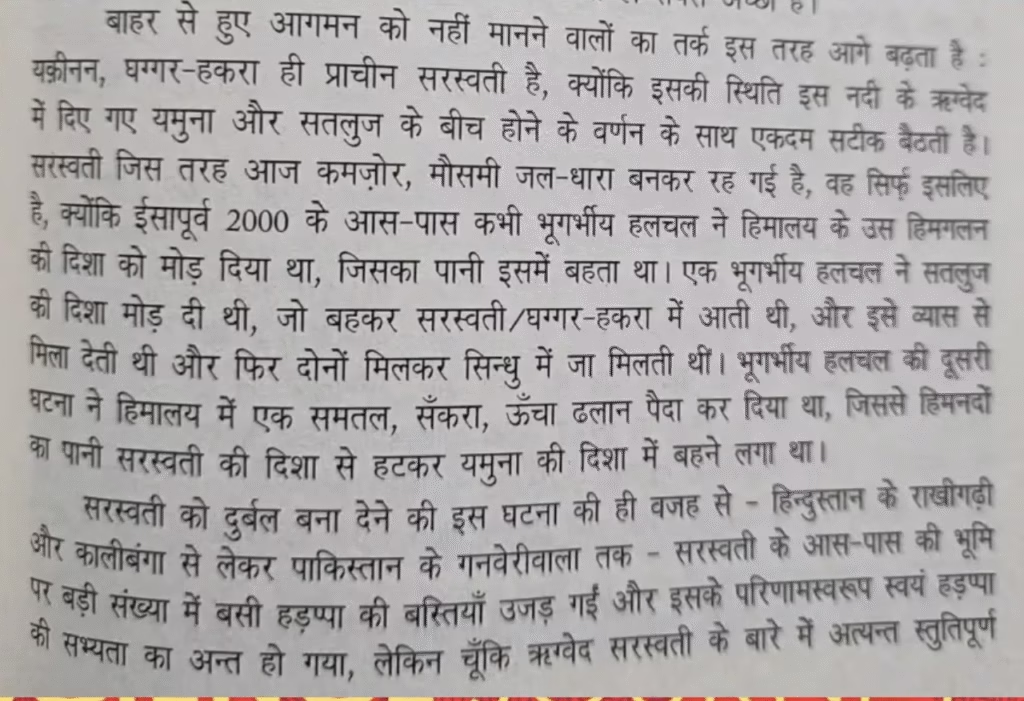
The Argument Against External Migration (The ‘Out of India’ Theory)
A segment of scholars, often referred to as proponents of the ‘Out of India’ theory, argue that the Vedic Aryans were indigenous to the Indian subcontinent and did not migrate from Eurasia. A key pillar of their argument is the identification of the Ghaggar-Hakra with the Vedic Saraswati. They contend that the Saraswati’s location between the Sutlej and Yamuna, as described in Vedic texts, precisely matches the Ghaggar-Hakra’s historical course. They also explain the river’s diminished state by citing the geological events that supposedly altered its flow, redirecting its waters and transforming it into a seasonal stream.
The ‘Great Conspiracy’ Claim
Those who deny the Aryan migration theory often label the notion of external Aryan origins as a conspiracy involving multiple continents and scientific disciplines. They believe this narrative was propagated to serve specific political or ideological agendas. Their argument hinges on the belief that the Vedic people were indigenous and that the Saraswati River, as described in their texts, was a powerful, life-giving river crucial to their civilization. The subsequent weakening of this river is explained through geological shifts, not by the migration of a new people.
Challenges to the ‘Out of India’ Theory
The ‘Out of India’ theory, particularly its reliance on the Ghaggar-Hakra being the Saraswati, faces several challenges when compared against broader archaeological and linguistic evidence. The theory that the Ghaggar-Hakra was a mighty Himalayan-fed river is contradicted by geological and hydrological studies. Furthermore, the claim that the Saraswati was a powerful river capable of carving through mountains is not supported by the characteristics of the Ghaggar-Hakra, which appears to have always been a rain-fed system.
Challenging the Saraswati-Ghaggar-Hakra Equation
The Afghanistan Connection: Harahvati River
A significant counter-argument suggests that the Saraswati mentioned in the Rigveda might not be the Ghaggar-Hakra but rather the Harahvati River in Afghanistan. Several experts propose that the Aryans, possibly during their migration through Afghanistan, encountered the Harahvati River. Linguistic analysis shows a phonetic similarity between Saraswati and Harahvati. This theory posits that the Aryans, having come into contact with this river, later associated its name or characteristics with a river in the Indian subcontinent, or that the memory of Harahvati became conflated with local river systems.
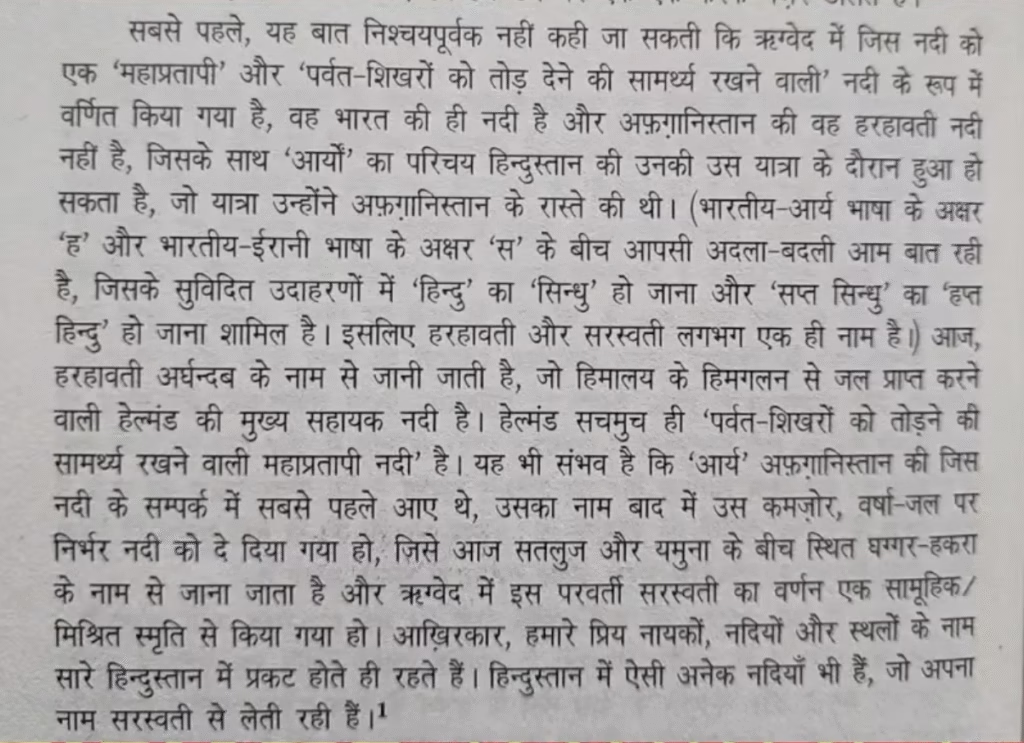
Harahvati and Helmand River System
The Harahvati River, known today as the Helmand River in Afghanistan, is a major river system originating from the Hindu Kush mountains. It is described as a powerful river, receiving glacial meltwater and sustaining agriculture in its basin. This description aligns more closely with the powerful, mountain-breaking river mentioned in some Vedic hymns than the seasonal Ghaggar-Hakra. The theory suggests that the Aryans might have first encountered this mighty river and that its memory was later transferred or associated with Indian river systems.
The ‘Epic Echo’ of Saraswati
Despite the challenges, the Saraswati’s name resonates powerfully in Indian literature and mythology. The term ‘Mahakavyatmak Pratidhwani’ (epic echo) is used to describe the profound and enduring presence of Saraswati’s name in various texts. This evocative presence has drawn attention and fueled interpretations, but it also masks underlying complexities and potential misinterpretations when trying to pin it down to a specific, present-day river.
The Evolution of Saraswati: From River to Deity
The understanding of Saraswati has evolved significantly from its potential origins as a river. In later Vedic texts and Puranas, Saraswati transforms into a goddess, associated with knowledge, music, arts, and wisdom. She is often depicted as the daughter or wife of Brahma, the creator god. This transformation from a geographical entity to a divine figure suggests a cultural evolution where the memory of the river was perhaps absorbed into a larger pantheon of deities, or its attributes were spiritualized.
The Purana-Veda Connection and Contamination
The relationship between the Vedas and the Puranas is a complex area of study. Critics of the traditional chronology argue that the Puranas, which elevate Saraswati to a divine status, were composed much later and may have incorporated or adapted elements from other traditions, including Buddhism. The argument is that the transformation of a river into a goddess, and the integration of Saraswati into the creation myths of Brahma, might not stem directly from the earliest Vedic layers but from later compilations that sought to synthesize or even co-opt earlier beliefs and traditions.
Scientific and Archaeological Re-evaluation
Hydrological Studies of the Ghaggar-Hakra
Recent extensive studies, including those published in journals like ‘Quaternary Science Reviews’ and ‘Current Science’, have re-examined the hydrological history of the Ghaggar-Hakra system. These studies, utilizing techniques like optically stimulated luminescence (OSL) dating and sediment analysis, provide crucial insights into the river’s flow patterns and its relationship with human settlements. The findings often challenge earlier assumptions about the river’s sustained flow and its direct connection to a single, mighty Himalayan river.
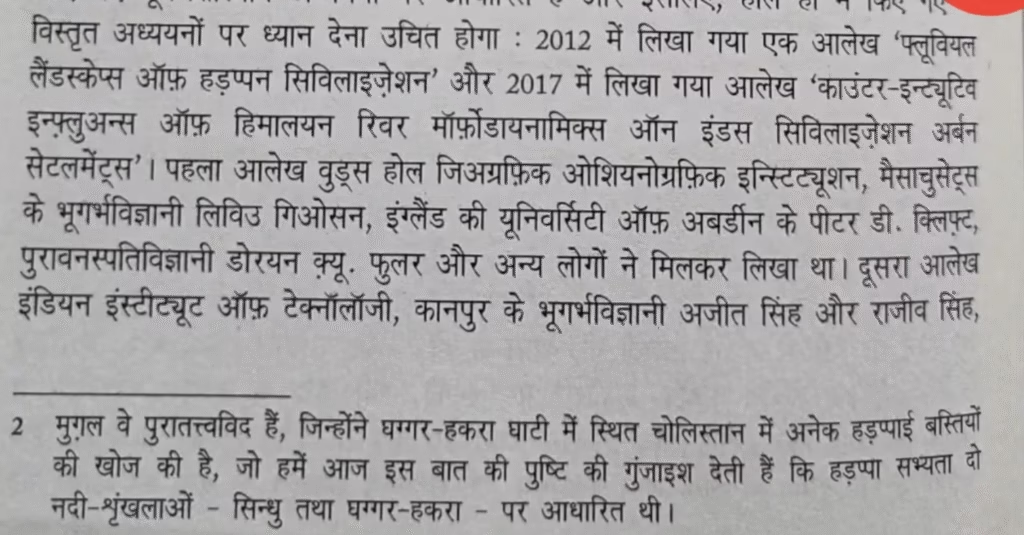
Dating the Saraswati’s Decline
Contrary to the popular belief that the Saraswati River dried up around 4,000 years ago, some research suggests a more complex timeline. Archaeological evidence indicates that the Ghaggar-Hakra river system may have been active in various forms for much longer, and its decline was likely a gradual process with multiple phases. Some studies suggest that settlements on the Ghaggar-Hakra persisted even after 1500 BCE, indicating that the river, in some capacity, continued to support life for a considerable period after the commonly cited date for its demise.
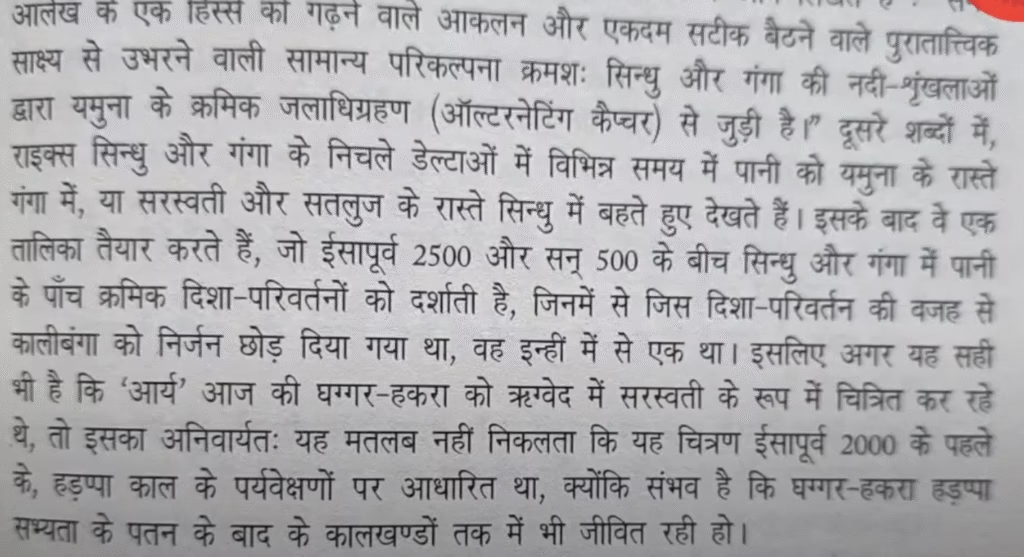
The Role of Monsoon Dependence
A key finding from recent research is the significant role of the monsoon in sustaining the Ghaggar-Hakra system. Studies indicate that the river was primarily rain-fed, especially in its later stages. While it may have received some Himalayan meltwater, its vitality was largely dependent on monsoon cycles. The weakening of the Indian summer monsoon over millennia likely played a crucial role in the gradual desiccation of the river system, rather than a single dramatic geological event diverting all its water.
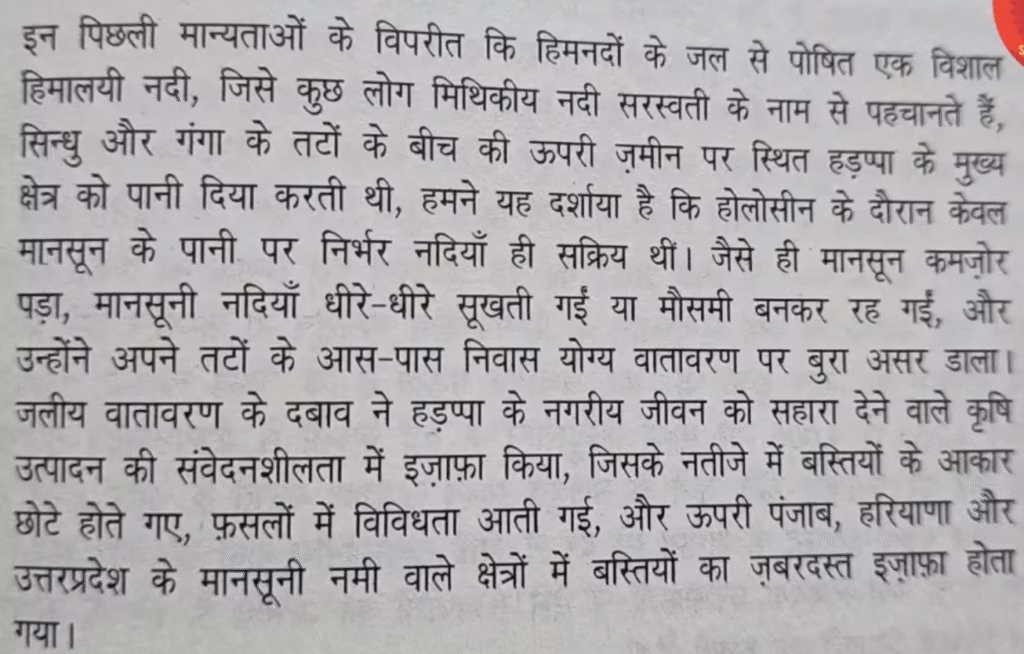
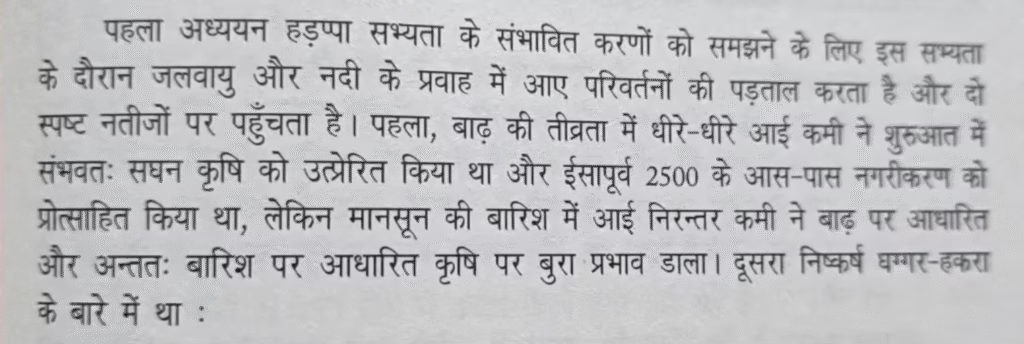

Evidence from Kalibangan and Rakhigarhi
Sites like Kalibangan and Rakhigarhi, located on the Ghaggar-Hakra, offer vital clues. While some earlier interpretations suggested that these sites were abandoned due to the river drying up, more recent analyses propose that the decline of these settlements was a more complex process, influenced by multiple factors including environmental changes and shifts in riverine systems. The exact period of the Ghaggar-Hakra’s functional decline and its direct causal link to the abandonment of these major Harappan sites are still subjects of detailed research.
The ‘Meghalayan Age’ and Global Droughts
Further research into paleo-climatic data has identified a significant period of global drought, potentially starting around 4,200 years ago (corresponding to the proposed Meghalayan Age). This period of aridity is believed to have had a profound impact on civilizations worldwide, including those in the Indian subcontinent. This widespread climatic event, rather than a localized geological shift, is now considered a more plausible factor in the decline of river systems like the Ghaggar-Hakra and the subsequent stress on the Indus Valley Civilization.
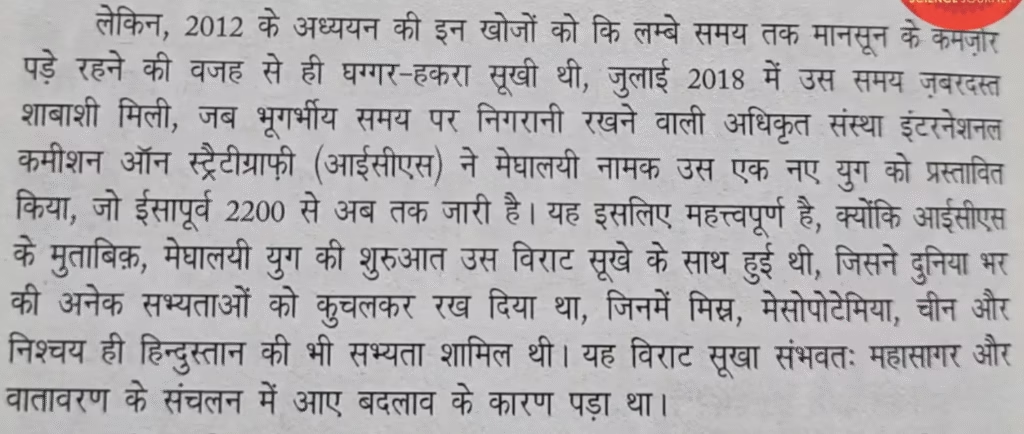
Debunking the ‘Mighty River’ Narrative
The Mighty River vs. Monsoon-Fed Reality
The description of Saraswati in some Vedic hymns as a mighty river, capable of breaking through mountains, stands in stark contrast to the geological and hydrological understanding of the Ghaggar-Hakra. Research firmly indicates that the Ghaggar-Hakra was a monsoon-dependent river and never possessed the characteristics of a colossal, Himalayan-fed river that could alter landscapes so dramatically. This discrepancy challenges the direct equation of the Ghaggar-Hakra with the mythical, powerful Saraswati of the Vedas.
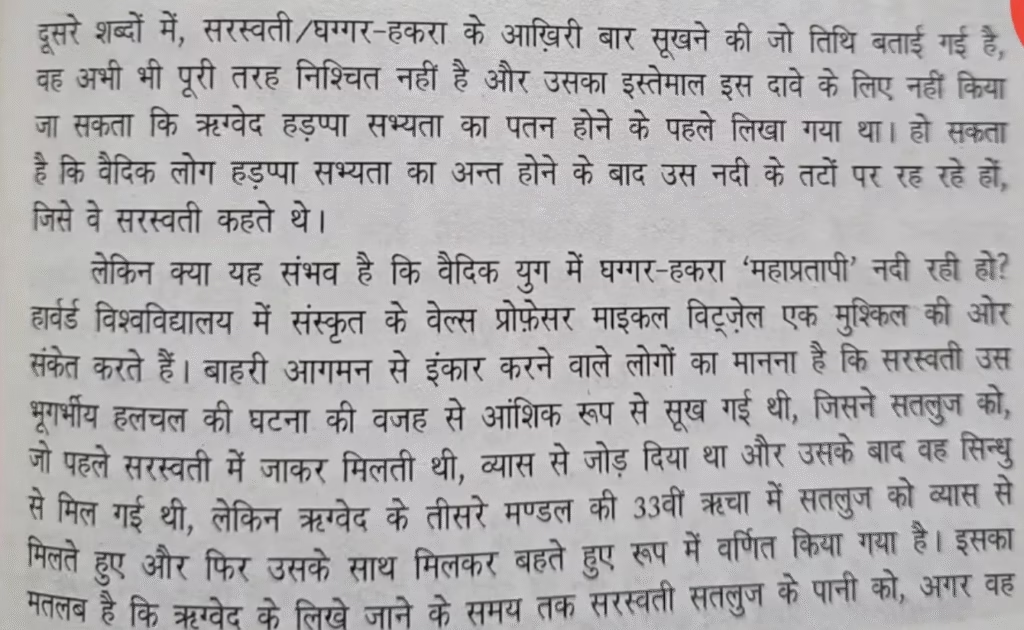
The Myth of Geological Diversion
The popular narrative that a geological upheaval diverted the Saraswati’s waters to the Sutlej and Yamuna is largely unsubstantiated by detailed geological studies. While river courses do change, the evidence points more towards a gradual weakening due to climatic shifts, particularly a decline in monsoon intensity, rather than a sudden, catastrophic diversion of a mighty river’s entire flow. The concept of such a dramatic diversion is considered a myth by many researchers in the field.
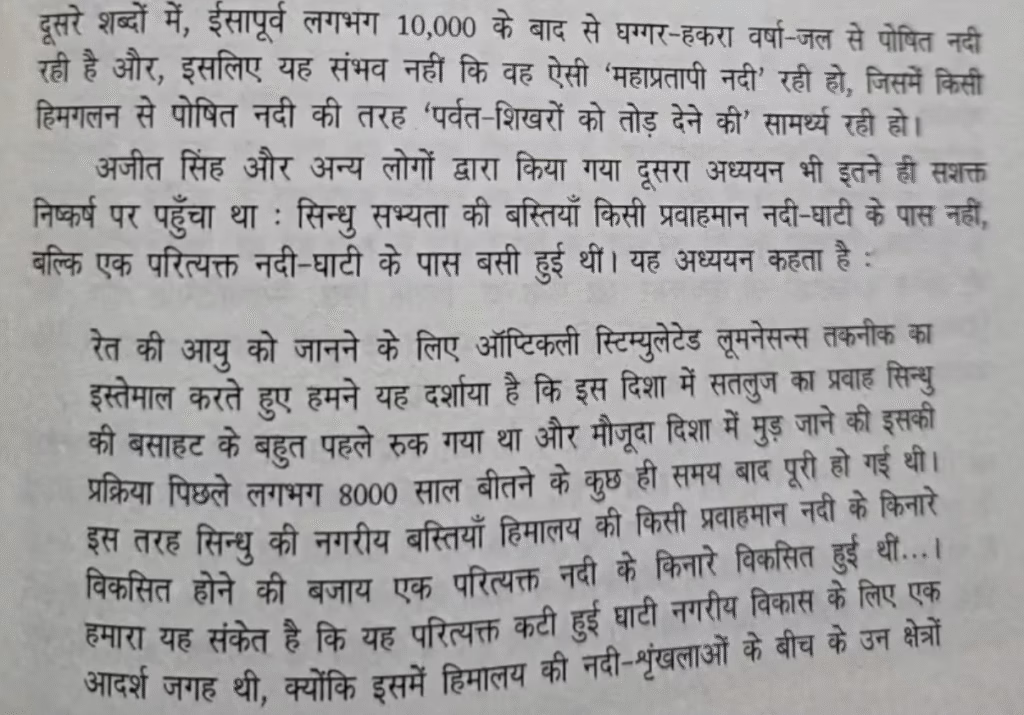
Linguistic Discrepancies: Vipas and Sutudri
The names of rivers mentioned in the Rigveda, such as Vipas (Beas) and Sutudri (Sutlej), differ from their modern names. While proponents of the ‘Out of India’ theory suggest that these are ancient forms, the argument for a strong oral tradition maintaining these names is weakened by the lack of a consistent naming convention across all rivers. The claim that the name Saraswati was preserved while others were lost or transformed presents a linguistic puzzle that undermines the theory of a seamless, ancient oral tradition. The insistence on identifying the Ghaggar-Hakra as Saraswati while simultaneously acknowledging different names for other prominent rivers creates a narrative inconsistency.
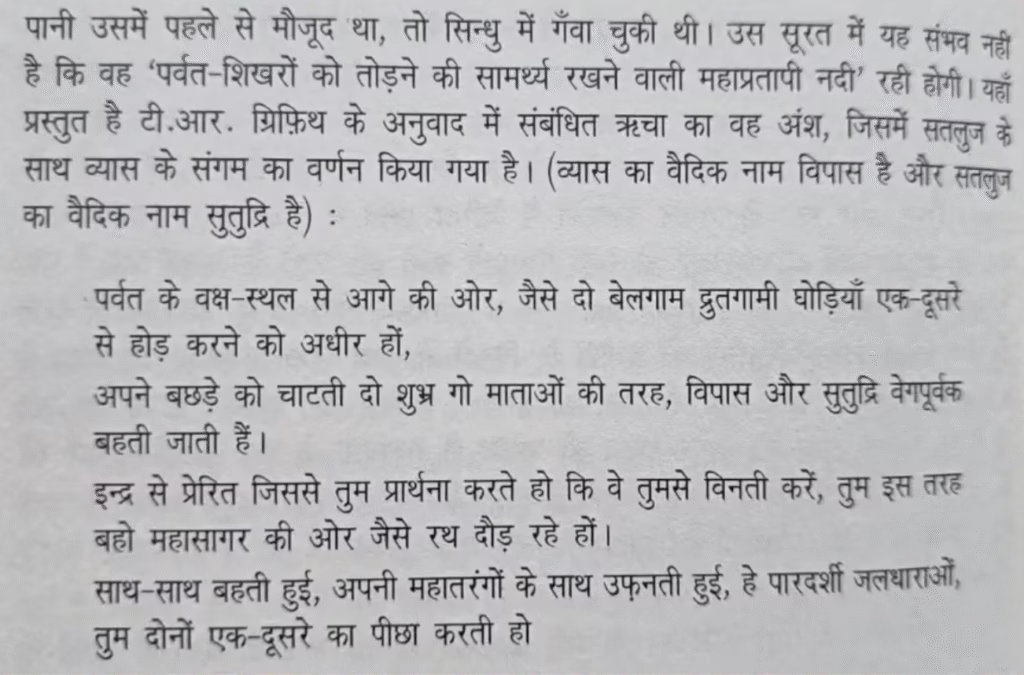
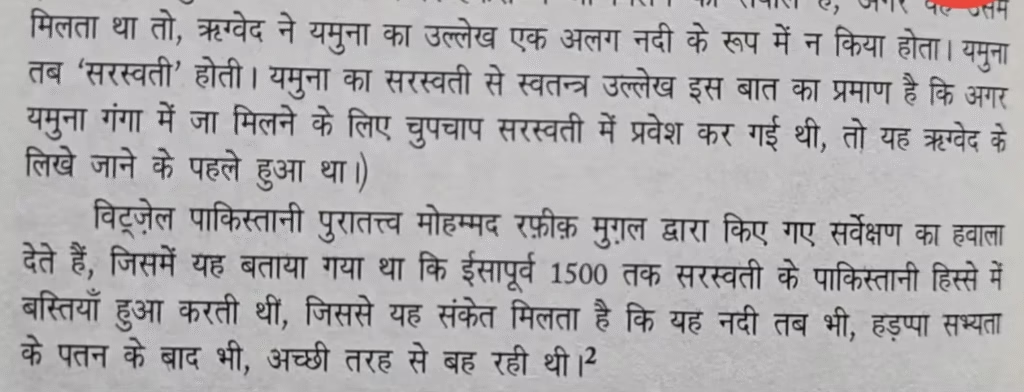
Archaeological Excavations at Adi Badri
The Claim of Saraswati’s Birthplace
Certain groups, particularly those adhering to the ‘Out of India’ theory, have identified Adi Badri in the Yamunanagar district of Haryana, nestled in the Shivalik foothills, as the birthplace of the mythical Saraswati River. This claim is based on interpretations of Vedic texts and local traditions. Driven by pressure from these groups, archaeological excavations were initiated in the region to uncover evidence supporting this claim.

Unexpected Discoveries: Buddhist Remains
The excavations at Adi Badri, however, yielded results contrary to the expectations of those searching for the origins of the Vedic Saraswati. Instead of finding evidence of an ancient river’s origin or Vedic settlements, the digs unearthed extensive remains of Buddhist civilization. This included large Buddhist monasteries, stupas, Buddha statues, and other artifacts. This discovery strongly suggested that the site was a significant center of Buddhist activity, not the origin point of the Saraswati River as traditionally conceived by Vedic proponents.
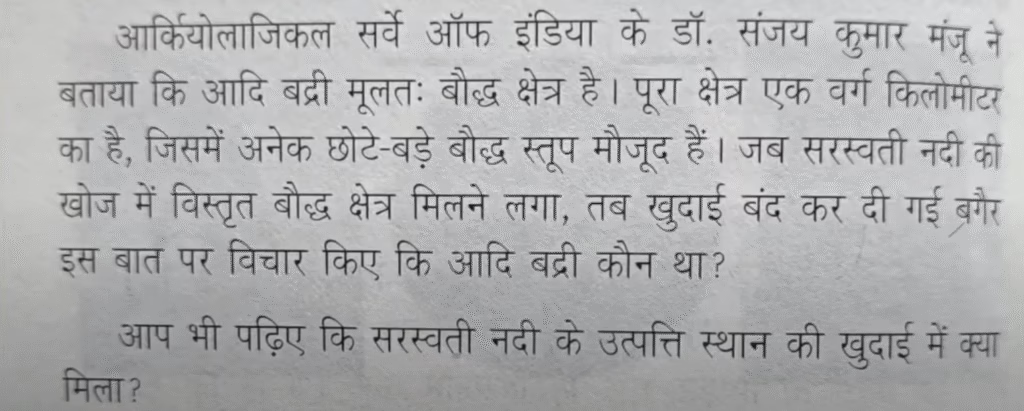
Suppression of Evidence?
The discovery of Buddhist remains at a site claimed to be the origin of the Saraswati has led to accusations that the findings were suppressed or that the excavations were prematurely halted to avoid contradicting the established narrative. Critics argue that the archaeological evidence points towards a significant Buddhist presence, which clashes with the claim of a Vedic origin for the Saraswati at this location. The halt in further investigation at Adi Badri, despite the compelling Buddhist evidence, fuels these suspicions about the manipulation of historical narratives.
Implications for the Saraswati Myth
The Adi Badri excavation results have profound implications for the myth of the Saraswati River as originating from this specific location and being intrinsically tied to Vedic origins. The presence of Buddhist artifacts strongly suggests that the site’s historical significance lies in its association with Buddhism, not with the birth of the Vedic Saraswati.
This challenges the narrative that the Puranic deities and myths are direct continuations or elaborations of Vedic traditions, especially when archaeological evidence points to a different historical narrative for such key locations.
Conclusion: Unraveling the Truth
The Saraswati as a Composite Memory
The available evidence suggests that the ‘Saraswati River’ as depicted in some Vedic hymns might not refer to a single, identifiable river like the Ghaggar-Hakra. Instead, it could be a composite memory, possibly influenced by encounters with multiple river systems, including the Harahvati in Afghanistan, and the hydrological dynamics of the Ghaggar-Hakra system. The river’s description as a mighty, mountain-breaking entity might be metaphorical or allegorical, reflecting a spiritual or cultural significance rather than a literal geographical characteristic.
The Saraswati River Was Likely a Monsoon-Fed System
Current scientific consensus, based on extensive hydrological and geological studies, points towards the Ghaggar-Hakra system being primarily a monsoon-fed river. Its fluctuations and eventual weakening are strongly linked to changes in monsoon patterns and potentially broader climatic events like the period of intense drought around 4,200 years ago. The idea of a mighty, perennial Himalayan river that was suddenly diverted is not supported by the data.

Vedic Texts and Their Dating
The dating of Vedic texts, particularly the Rigveda, remains a contentious issue. While some scholars argue for extreme antiquity based on the Saraswati references, the evidence suggests that the river’s description might not align with a specific, powerful river at the time of the text’s composition. The linguistic inconsistencies and the evolution of Saraswati from a river to a goddess in later texts further complicate the dating and interpretation of Vedic literature. It is highly probable that the Rigveda was composed at a time when the Saraswati was already diminished or its memory was being mythologized.
The Importance of Critical Inquiry
The persistent myth of the Saraswati River highlights the importance of critical inquiry and evidence-based reasoning when examining historical and cultural narratives. While reverence for tradition is important, it should not preclude a thorough investigation of facts and a willingness to revise understanding based on new evidence. The Saraswati’s story serves as a potent reminder of how myths can evolve and become deeply entrenched, often overshadowing factual historical and scientific accounts.
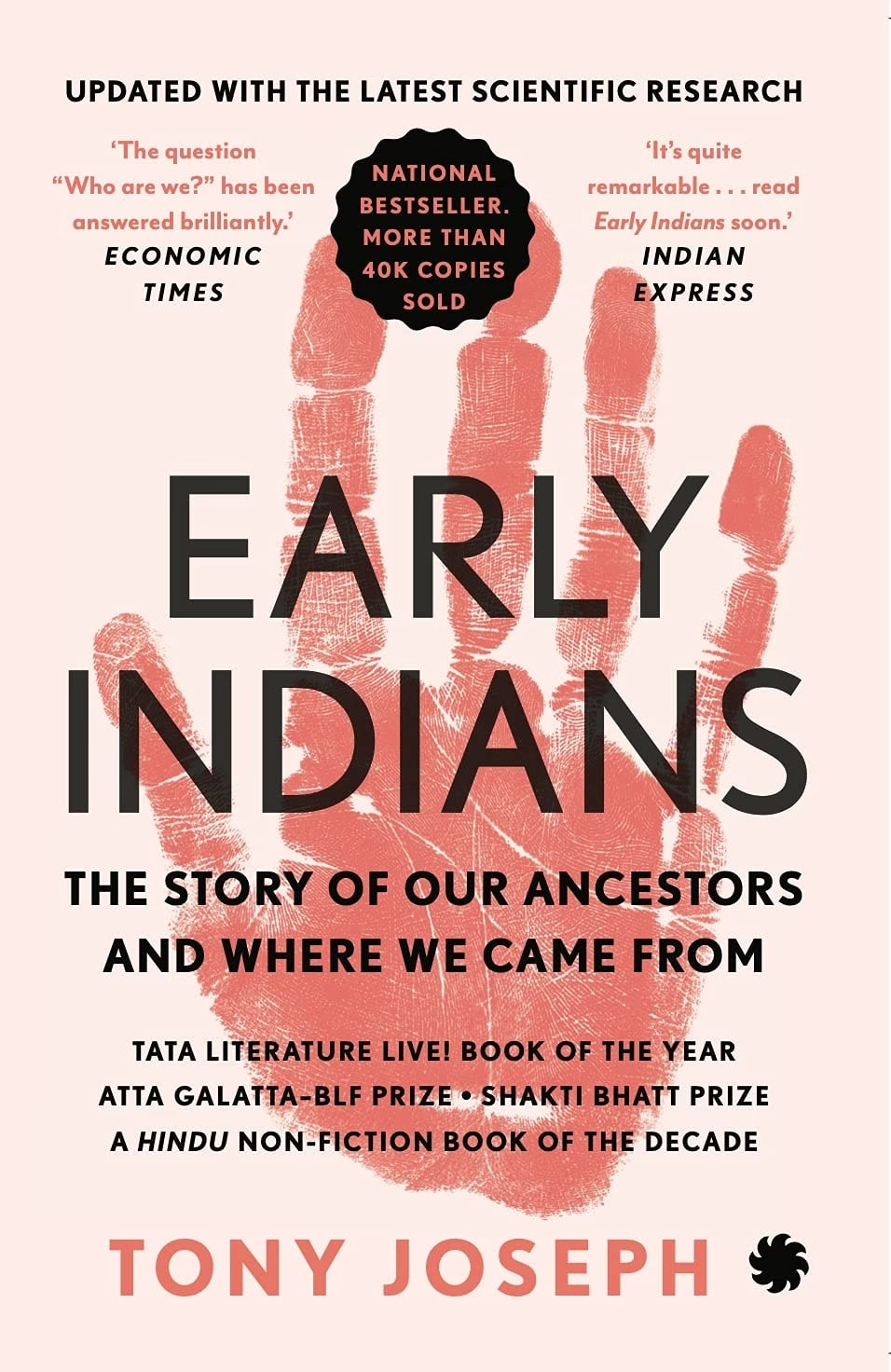
Who are we Indians? Where did we come from? To tell us the story of our ancestry, journalist Tony Joseph goes 65,000 years into the past – when a band of Homo sapiens first made their way from Africa into the Indian subcontinent. These were the First Indians. Citing recent DNA evidence, he traces the subsequent large migrations of modern humans into India – of a people related to early farmers of Iran who mixed with the First Indians at the latest between 5400 BCE and 3700 BCE and of the ‘Arya’ between 2000 BCE and 1500 BCE, among others. As Joseph unravels our past, he takes head-on some of the most controversial and uncomfortable questions of Indian history: Who were the Harappans? Are north Indians genetically different from south Indians? When did the caste system emerge? A hugely significant book, Early Indians bravely puts to rest several fierce debates on the ancestry of modern Indians.
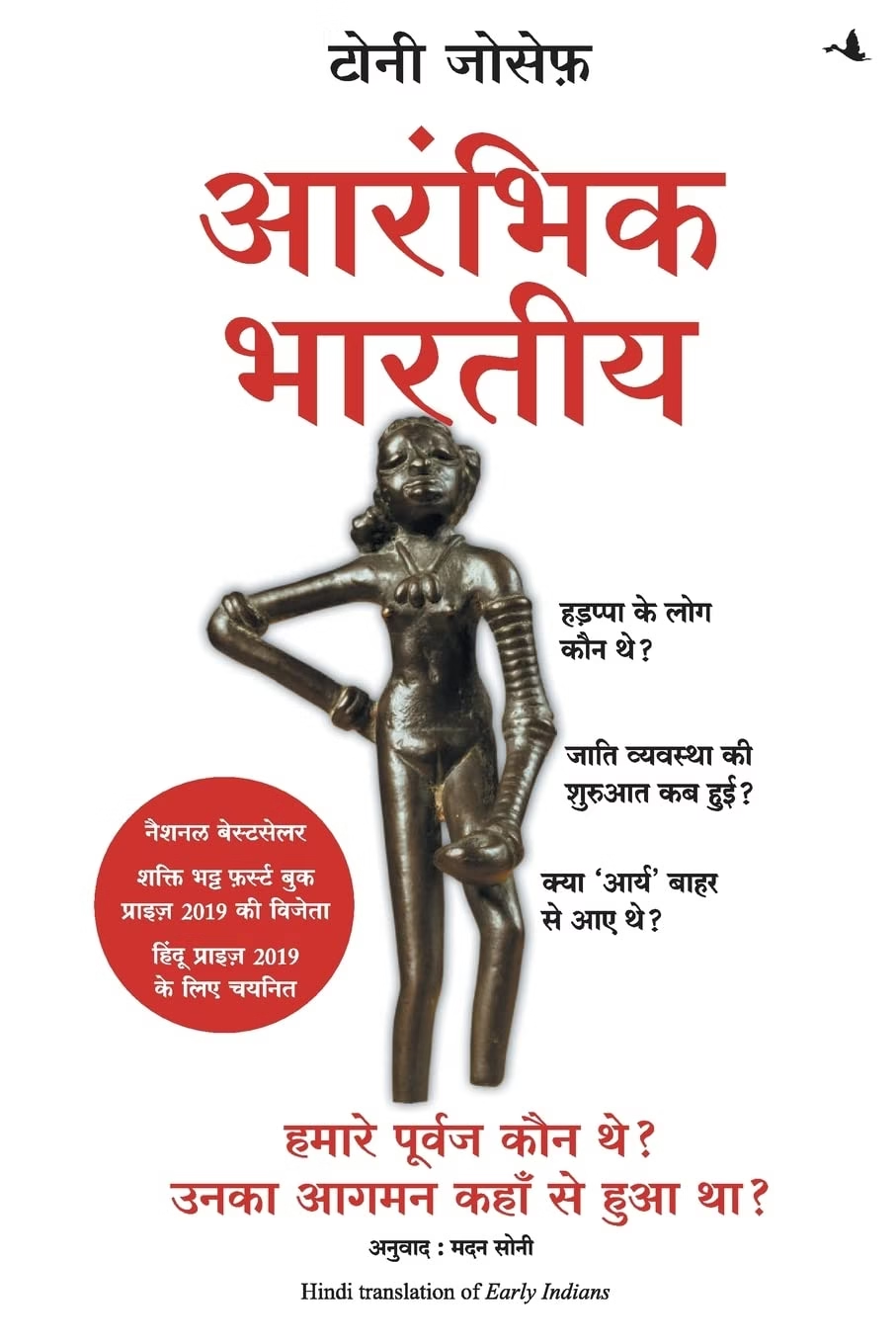
हम भारतीय कौन हैं? हम कहाँ से आए थे? इन गहन सवालों के जवाबों को जानने के लिए पत्रकार टोनी जोसेफ़ 65,000 वर्ष अतीत में जाते हैं, जब आधुनिक मानवों या होमो सेपियन्स के एक समूह ने सबसे पहले अफ़्रीका से भारतीय उपमहाद्धीप तक का सफ़र तय किया था। हाल के डीएनए प्रमाणों का हवाला देते हुए वे भारत में आधुनिक मानवों के बड़े पैमाने पर हुए आगमन यानी ईरान से 7000 ईसा पूर्व और 3000 ईसा पूर्व के बीच कृषकों के आगमन तथा 2000 ईसा पूर्व और 1000 ईसा पूर्व के बीच मध्य एशियाई स्टेपी (घास के मैदान) से अन्य लोगों के साथ ही पशुपालकों के आगमन का भी पता लगाते हैं। आनुवांशिक विज्ञान और अन्य अनुसंधानों के परिणामों का उपयोग करते हुए जोसेफ़ जब हमारे इतिहास की परतों का ख़ुलासा करते हैं, तब उनका सामना भारत के इतिहास के कुछ सबसे विवादास्पद और असहज सवालों से होता है – हड़प्पा के लोग कौन थे? – क्या आर्यों का भारत में वास्तव में आगमन हुआ था? – क्या उत्तर भारतीय आनुवांशिक रूप से दक्षिण भारतीयों से भिन्न हैं? यह एक बेहद महत्त्वपूर्ण पुस्तक है, जो प्रामाणिक और साहसी तरीक़े से आधुनिक भारत की वंशावली से जुड़ी चर्चाओं पर विराम लगाती है। यह पुस्तक न केवल हमें यह दिखाती है कि आधुनिक भारत की जनसंख्या के वर्तमान स्वरूप की रचना कैसे हुई, बल्कि इस बारे में भी निर्विवाद और महत्वपूर्ण सत्य का ख़ुलासा करती है कि हम कौन हैं। हम सब बाहर से आकर बसे हैं और हम सब मिश्रित जाति के हैं
What Can You Do?
To further understand and contribute to the factual understanding of the Saraswati River and other historical enigmas:
- Educate Yourself: Read scholarly articles, books, and research papers from reputable archaeological, historical, and scientific institutions. Look for works that cite their sources and present balanced arguments.
- Question Narratives: Approach claims about extreme antiquity or historical events with a critical eye. Always ask for the evidence supporting these claims.
- Support Research: Advocate for and support scientific and archaeological research in India. Funding for such endeavors is crucial for uncovering factual history.
- Share Knowledge: Discuss these findings responsibly with others. Help disseminate accurate information and debunk prevalent myths based on evidence.
- Engage Respectfully: Participate in discussions about history and culture with an open mind and respect for diverse perspectives, while firmly grounding your arguments in verifiable facts.
Read more about Unveiling the Truth: Hindu’s Ancient Science or Modern Propaganda?
Find out more about Ancient Indian Medicine: Beyond Common Narratives
Do you disagree with this article? If you have strong evidence to back up your claims, we invite you to join our live debates every Sunday, Tuesday, and Thursday on YouTube. Let’s engage in a respectful, evidence-based discussion to uncover the truth. Watch the latest debate on this topic below and share your perspective!

